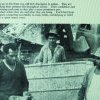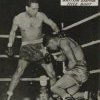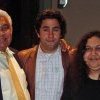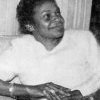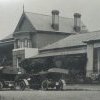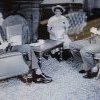1950s
1950
Birth of Harry Williams, who becomes the first Koori to play soccer for Australia. He begins soccer life at nine with the St George Police Boys Club. A third grader with Western suburbs, he rises through the ranks with St George Budapest in 1970. In 1970 he is picked for the national side and tours the world. He plays 17 full international and 26 other representative games for Australia. In 1977 he plays six world cup games. (Tatz p. 10) He is still running professionally in the mid 1980s.
The Art Gallery of NSW establishes an Aboriginal Art Space. Begun in the 1950s, it is renowned for bark paintings from Arnhem Land, many of which are donated by Dr Stuart Scougall in the late 1950s and early 1960s. Over the years there have been other significant donors, including the scientist Harry Messel.
Smith’s Weekly reports that a Koori girl received thirty shillings a week as a Cook on a station. She moved to a country town and got thirty five shillings for washing dishes in a café. Coming to Sydney, she got four pounds, ten shillings a week in a shirt factory. Many country people find rent a problem.
1951
1952
Dave Sands (1926-1952), boxer, is born on 24 February 1926 at Burnt Bridge, near Kempsey, New South Wales, fifth of eight children of George Ritchie, a rodeo-rider and timber-cutter. Dave's brothers Clement, Percival, George, Alfred and Russell also box, emulating their father and their maternal great-uncle Bailey Russell, a noted bare-knuckle fighter.
1953
1955
Frances Peters-Little, growing up at Birchgrove in the 1950s, returns to her grandmother in Walgett every year. While she is there, she says, ‘I become a different person then’. Country racism, she says, was different. Pure arrogance. But in 1985, when interviewed by Plater, she reflects that the most vicious racism comes from other Koori people. ‘You can’t be Aboriginal if you grew up in Balmain or if you did you might be Aboriginal but you’re not as Aboriginal as someone else who grew up on Moorie Mission. How dare they? Who’s our panel of critics here? … It’s almost like there’s a vested interest in some people maintaining this stereotyped idea of what an Aboriginal person is and where they come from’. She also recalls the hundreds of Koori people who survived the early settlements and had to forget they were Aboriginal, ‘so they did, they denied it'. (Plater, pp. 180-182, 245)
1956
1957
1958
Chicka Madden is offered a job clearing timber for the Warragamba Dam. On the site he meets many young men from La Perouse (some formerly from northern NSW) such as members of the families Ardler, Sands, Ritchie, Hassan and Davidson. He works as an axeman at the wall of the dam for about five years. When the work finishes he is offered a Water Board job in the city digging trenches. Not for him! (V47, ‘Working at Warragamba Dam’)
Koori families and other homeless people are living among the wharves and old boats along what is now Bicentennial Park and Federal Park near the end of Glebe Point Road. They pick up employment in unofficial labour exchanges like the White Bay Hotel, and also gain income from scavenging for scrap metal and timber.
First Conference of the Federal Council for Aboriginal Advancement (FCAA). Amongst the Delegates is Bert Groves. At this conference Groves supports the proposal that the Australian Constitution be changed by referendum to eliminate the discriminatory clauses against Aboriginal people, sections 51 (xxvi) and 127. (Horner p. 31)
1959
After two years residence at the Warwick Farm former army camp, the Madden family is allotted a house in Villawood two or three kilometres from the station, (no bus!) while his father works in the city on the railways. Uncle Chicka continues to ride his motor bike to town on Friday nights. The family find it too far from the city and finally move back into Redfern.
Judy Chester and her family leave Wellington because her mother has a serious illness. They settle in Redfern and later to Green Valley in the southwest. They work with Gandangara people from the south western areas of Sydney including Robyn Williams, whose grandmother is able to pass on directly for her family the stories for the land around what is now Liverpool and Camden. A number of Aboriginal women’s supportive networks for childcare are established at this time such as the St John’s Park Aboriginal Women’s group. (Goodall, p. 295)











